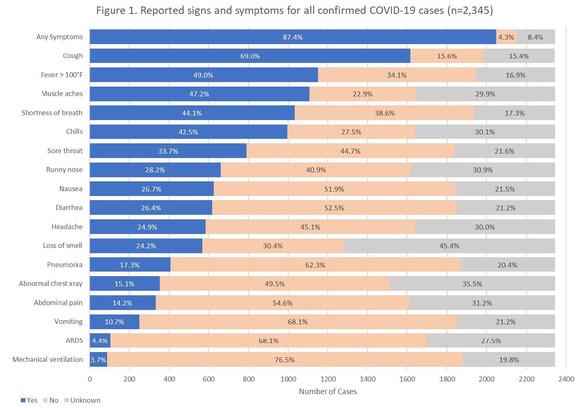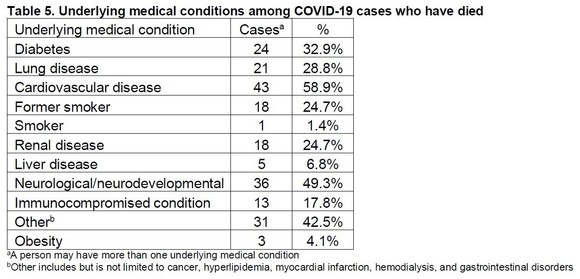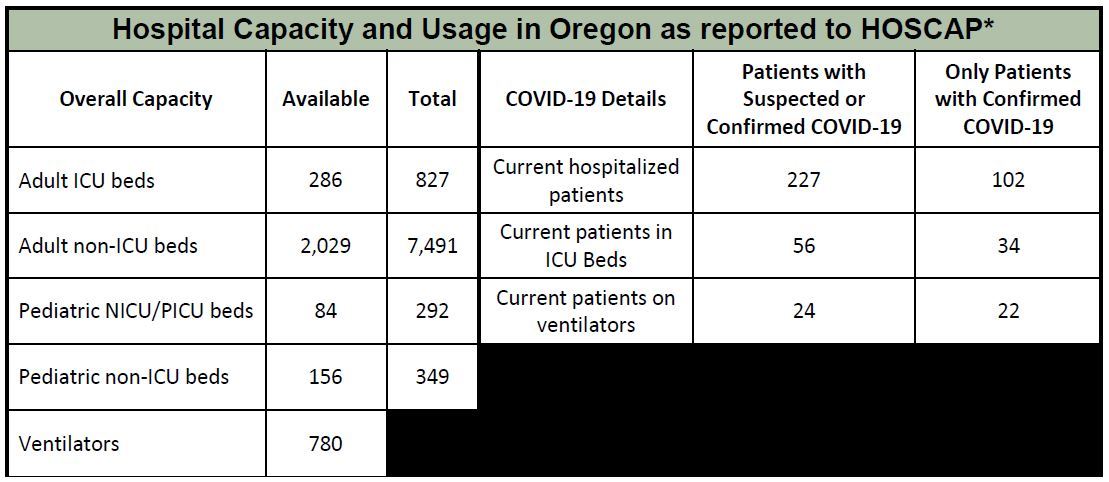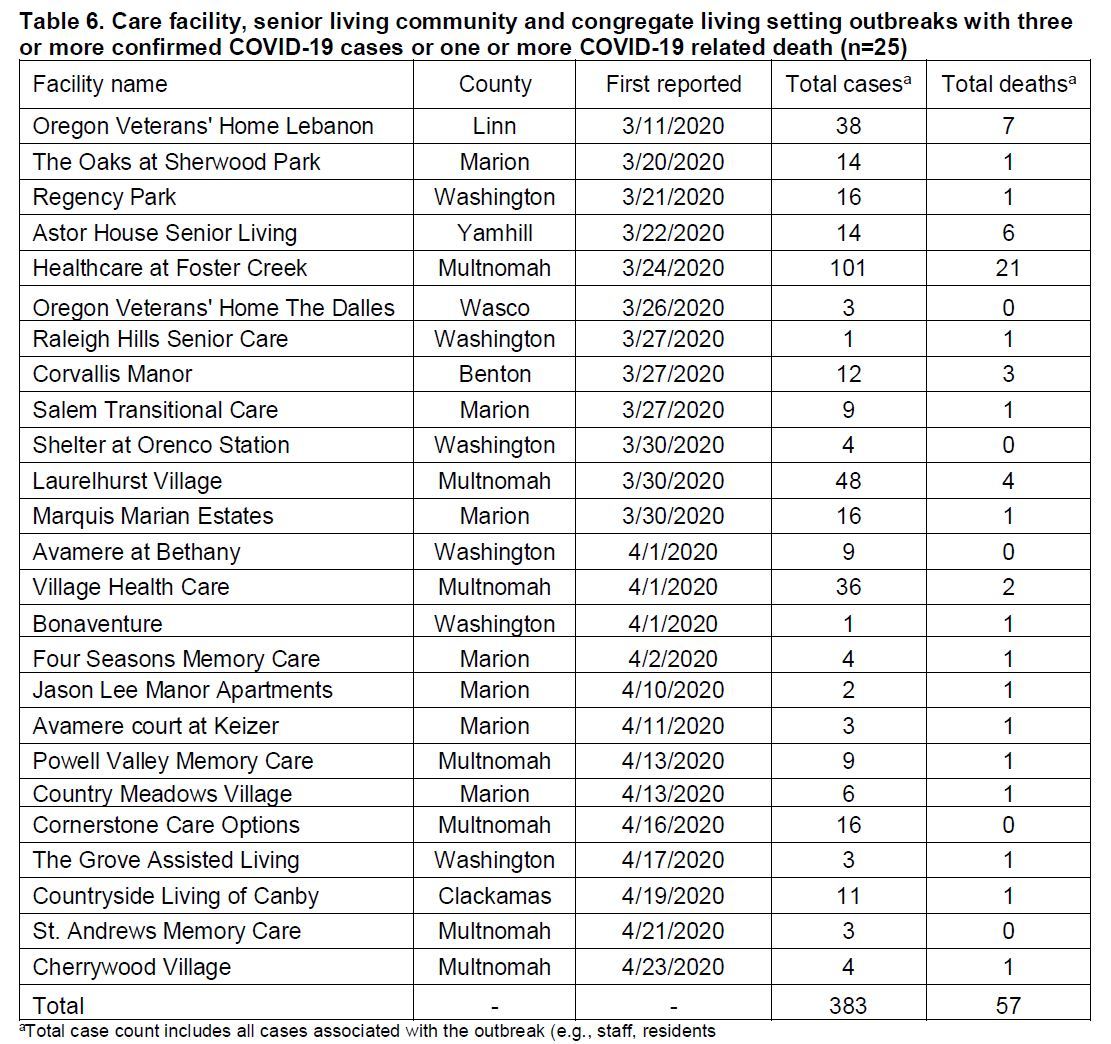|
Dear Friends and Neighbors,
Contact tracing is a key component of Governor Brown’s science-based framework to gradually reopen portions of the state economy. In addition to plans around more testing and containment strategies, the Governor’s office is drafting a contact tracing plan that will be reviewed by local public health and the state’s COVID-19 Medical Advisory Panel.
But what is contact tracing?
The goal of contact tracing is to identify who has coronavirus and find out who else may have been exposed by contact with those people. Then, they can be assessed and quarantined if necessary. Local public health authorities did this work aggressively when coronavirus first popped up in Oregon, but they didn’t have the resources to keep it up and public health officials prioritized their attention to managing the response to the outbreak. Now, with the pandemic leveling off, it’s time to get back to this critical work more comprehensively.
No state should try to get back to any kind of normal routine without adequately understanding who is infected. That’s why contact tracing is important. We can’t move beyond Stay Home, Save Lives without better contact tracing. Thus, the Oregon Health Authority is heavily ramping up this work by hiring and training more contact tracers, with the goal to have 600 contact tracers ready to go statewide by mid-May.
Contact tracers attempt to interview every person confirmed to have coronavirus and try to find the source and with whom they have been in contact in order to see if the virus has spread to other people. These interviews are particularly important to identify people who may have been exposed and are in a high-risk category due to their age or underlying medical conditions. Contact tracers then inform people who are at risk of infection, help them get tested, and advise on how to prevent the virus from spreading elsewhere.
In the video below, Dr. Paul Cieslak, the Medical Director of the Acute and Communicable Disease section of the Oregon Health Authority, explains contact tracing in more detail.

The sooner we can improve our ability to do contact tracing, the sooner we will have a better ability to stop the spread and protect ourselves.
Eric Lofgren, an assistant professor and infectious disease epidemiologist at Washington State University, explained to The Oregonian last week why this is so important moving forward. “The faster you can identify people,” he said, “the more people you can identify, the longer you have until you fall back to population-wide interventions that are much more burdensome.”
Of course, this assumes we continue to follow the Stay Home, Save Lives directive for the time being and continue our great work flattening the curve.
I’ll provide more information about our state’s progress on contact tracing when it’s available.
The Oregon Health Authority announced updated data today on which symptoms are most commonly reported with diagnosed cases of coronavirus. The top five most reported symptoms statewide are (1) cough; (2) fever over 100; (3) muscle aches; (4) shortness of breath; (5) and chills. As a reminder, the Centers for Disease Control and Prevention issued new guidelines this week for potential coronavirus symptoms, adding chills and repeated shaking with chills, muscle pain, headache, sore throat and new loss of taste or smell to its list.

The agency is also now providing a summary of the underlying health conditions among patients with coronavirus who have passed away. Please note this data was compiled when there had been 92 deaths in Oregon from coronavirus (there are currently 101 reported deaths). Sadly, nearly three in five people who have died after contracting the virus suffered from cardiovascular disease. Of course, as a reminder, everyone is susceptible to the coronavirus, even if they don’t have any underlying conditions. The assumption about the high number of cases with “neurological/neurodevelopmental” as an underlying condition is the number of people with dementia-related conditions who may have died because of exposure in a long-term care facility. This still needs to be confirmed, however.

- Oregon state parks are now closed indefinitely to prevent the spread of coronavirus. The closure was initially set to end on May 8. All overnight and day-use reservations are cancelled through at least May 25. More information on this decision from the Oregon Parks & Recreation Department is available here.
- Costco will require nearly all customers in their stores to wear masks, starting Monday, May 4. The Oregonian has more details here. New Seasons announced a similar mask policy last week, which went into effect today.
- The Oregon Health Authority (OHA) announced 61 more diagnosed cases of coronavirus, bringing the statewide total to 2,446. Of surviving COVID-19 cases, 38.2% of people are considered recovered and 34.8% are not yet recovered. OHA is still assessing recovery status for 26.9% of the COVID-19 cases. The median time to recover for all symptomatic cases is 15 days. A person is considered recovered once they are free of fever (without the use of fever-reducing medication), cough, shortness of breath, and diarrhea for 72 hours. Sadly, there have been two more deaths, meaning 101 people in Oregon have now died from the virus. Nationwide, more than 61,000 people have died of the virus, and there have been more than 1 million diagnosed cases.


OHA publishes data on cases and deaths in care facilities, senior living communities, and congregate living settings that have three or more confirmed COVID-19 cases or one or more death. Facilities with outbreaks that are considered closed will be removed from this list. An outbreak is considered closed if there are no new cases identified for 28 days after the last case recovers. This list does not include correctional facilities.

As a reminder, the federal government has designated Amazon and Walmart as the ONLY eligible grocery outlets where people can purchase food online using their Supplemental Nutrition Assistance Program (SNAP) benefits. The federal government has not added any additional grocery chains to this service for people who can’t get to the store. Unfortunately, SNAP also does not cover the cost of the delivery service charge for online grocery purchases.
I’m also frustrated that the federal government is taking the position that the additional $600 per week in supplemental unemployment benefits during the coronavirus pandemic is considered countable income for eligibility purposes. So, this could affect a person’s level of SNAP benefits, access to subsidized health insurance on the health insurance exchange, and eligibility for Temporary Assistance for Needy Families (TANF). Oregon officials have made requests to the federal government to change this.
Families in need should not be penalized and lose access to assistance during a global pandemic.
To read past newsletters, you can go to this link. For up to date information, please check this link to the Oregon Health Authority where regular updates are posted: https://www.oregon.gov/oha/ERD/Pages/News-Releases.aspx
Please email me at Rep.TinaKotek@oregonlegislature.gov if you have specific concerns that have not been addressed by the OHA. Our office will do all we can to help and protect all Oregonians.
Thank you for reading! We will get through this together.
Best,

Tina Kotek
State Representative
House District 44
Speaker of the House
email: Rep.TinaKotek@oregonlegislature.gov I phone: 503-986-1200
address: 900 Court St NE, H-269, Salem, OR 97301
website: http://www.oregonlegislature.gov/kotek
|